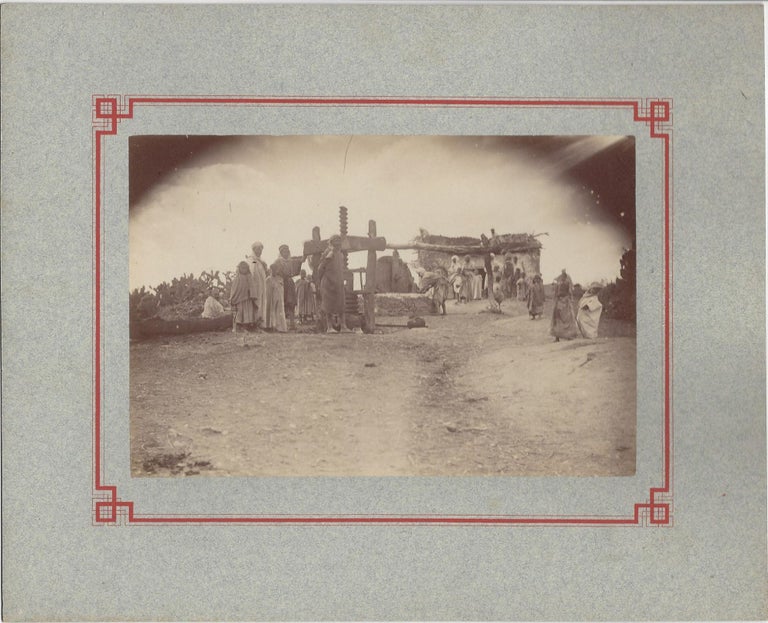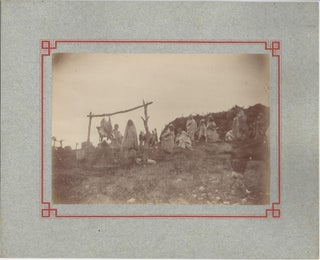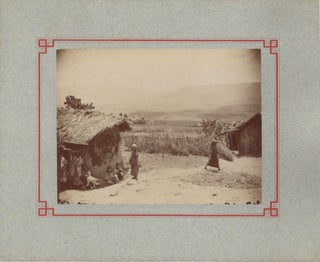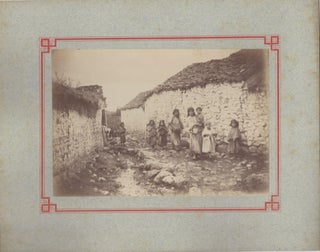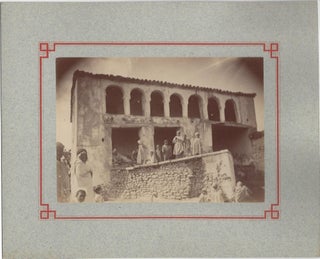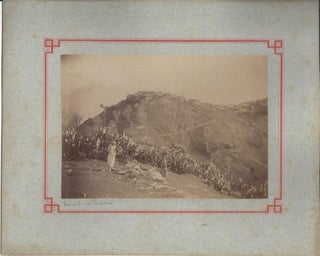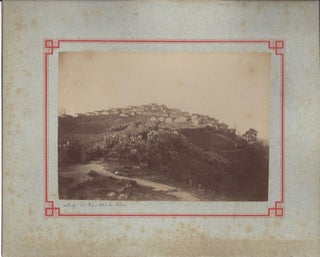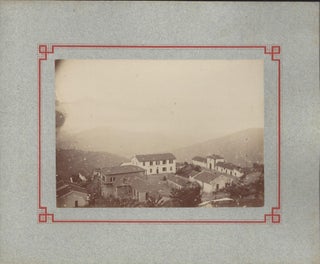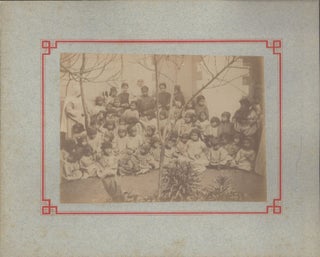Extensive Collection of Photographs of Greater Kabylia and the Kabyles, 1888–1889
[Algeria / France]: 1888–1889. 141 original, vintage sepia-toned albumen prints on blue cardboard mounts with red frames (some of the images appear in more than one copy). Some images are labeled in French in ink or pencil. Mount size: ca. 255 × 210 mm; image size: ca. 170 × 120 mm. A few cardboards with foxing, the images are in fine condition. Overall in fine condition.
A unique collection of nearly 150 photographs of extensive 19th-century documentation of Greater Kabylia (wilaya of Tizi Ouzou), its ethnography, architecture, nature, and missionary education. The largest coherent collection of such early photographs of the region we could trace.
The pictures are ranging from ethnographic and nature photography to images of the built environment and missionary education. Few of them are labeled or dated, among those the majority were captured on March 11–12, 1889. Some of the captions indicate the location of the photograph, which are Tawrirt Mengellat (Taourirt Menguellet), Ouadhia, Beni Yenni (Ath Yenni), Ain Sultan and Ait Mellal (At Mlal or Draa Mellal). One of the pictures is dated a year earlier, necessarily taken during a prior journey to the province.
The photos could be classified into five distinct groups. The largest is ethnographic photography, consisting of 53 photographs (of 30 different pictures). Ranging from snapshots and probably arranged scenes with local people, their livestock; some are more detailed showing particular activities like gathering at the well, or drying meat, others document common rural scenes, or the clothing of the Kabyles. 36 photos (15 different) are documenting the built environment, mostly traditional architecture and urban landscapes, one of them depicts a colonial building complex probably in Tawrirt Mengellat. 35 photographs (11 different) are documenting the missionary education, showing groups of local boys and girls with Pères Blancs (White Fathers) and Soeurs Blanches (White Sisters), the French Catholic missionary teachers; also an interior of a school of embroidery (dated 1888). 9 images (6 different pictures) capture the nature and 8 miscellanies (5 different) show the harbor of Algiers (dated on March 13, 1889), the Great Mosque (Djamaa el Kebir), and some railroad cars.
Kabylia is the mountainous coastal region in northern Algeria, inhabited by the Berber people. It remained the last independent area of the French government in Colonial Algeria until the early 1870s.
The photos are attributed to François Charvériat (1854–1889), a French professor at the Faculty of Law of Algiers, and the author of Huit Jours en Kabylie. A travers la Kabylie et les questions kabyles (Paris, 1889). Charvériat believed that for successful colonization of a Muslim country like Algeria, the assimilation of its indigenous populations is indispensable, foremost the Kabyles, who differ from the majority of the Arab population in their traditions and language. He dedicated eleven study trips to Kabylia to collect knowledge about the culture of the Kabyle people and the result was published in the aforementioned, posthumously published book. The majority of the present photos were taken on Charvériat’s last trip to the Tizi Ouzou province in March 1889, just a few days before his death in Algiers on March 24, 1889, of a sickness supposedly a result of the journey.
We could not trace any collection of photographic documentation of such extent of the region, and we assume that this is the earliest and largest coherent collection of photographs of Greater Kabylia and the Kabyles of the era.
.
Price: €12,000.00

